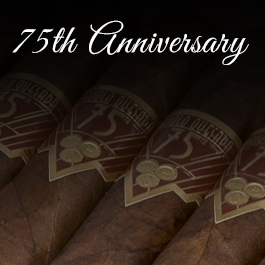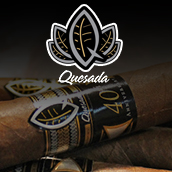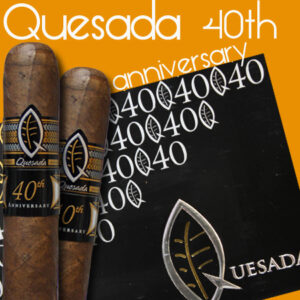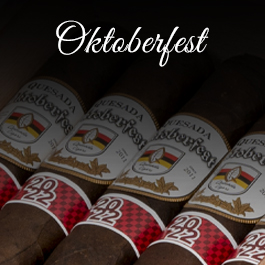Quesada
buying, storing and selling tobacco instead of baking bread, which was the family’s original profession.
Antero’s daughter married Agustin Quesada, who worked alongside her father and became the head of the operation. Their son was Manuel Quesada Sr, who would spearhead the success and continuation of the brand.
The Cuban revolution pushed the Quesada family to flee after the acquisition of their assets. Manuel Sr. sent his son Manuel “Manolo” Jr. to Miami to get an education in 1960. By the next year the entire family, including his brother Alvaro, had immigrated to the United States to be with Manuel Jr.
Manuel Sr. was able to get a $200,000 loan from the Royal Bank of Canada. The loan was based on the working relationship they had with the bank for over 50 years because the family had no collateral. Manuel Sr. invested the money in a warehouse in the Dominican Republic.
While Manuel Jr. was in college he was drafted in the Vietnam War, his service was rewarded with US citizenship. After returning, he finished his MBA and joined the cigar industry for himself.
The warehouse in Santiago, Dominican Republic was the continuation of the family’s original business in Cuba. Manuel Jr. had developed a close working relationship with Juan Sosa, a client of the family’s tobacco brokerage. The cigar production circumstances in Miami were bleak and Sosa was able to move his production to the Quesada warehouse in 1974.
The production migration formed a new company under the name Manufactura de Tabacos, S.A. also known as MATASA. MATASA was the first manufacturer to produce cigars in the Dominican Republic’s Free Trade Zone. The factory started with one table, a telephone, some torcedors and $100.
MATASA’s popularity grew as they continued to collaborate and produce highly demanded cigars. After Manuel Sr. passed away the company focused on cigar production instead of tobacco sales. Notable cigar collaborations in MATASA’s extensive portfolio include Romeo y Julieta (non-Cuban), Licenciados, Cubita, Casa Magna and Fonseca.
The journey to success for MATASA was not without hardship. The cigar boom in the 1990’s put a lot of stress on the production and Manuel Jr. struggled as people attempted to take advantage of the company. Thanks to the help of fellow Pro Cigar manufacturers, MATASA was able to keep the price of their cigars at a reasonable price despite the inflation.
In 2002, a plane crash took the lives of 3 members of its management team. Julio Fajardo, Alvaro Quesada and his son, Alvarito, were lost in the tragedy. Alvarito was supposed to be the next generation of Quesada leadership. Alvarito’s death left his fellow generational family members in contention to take over.
Eventually, Quesada became the name of the family’s extensive cigar operation. The fifth generation of the Quesada family became heavily involved. This new generation includes Manuel Jr’s own daughters Patricia and Raquel and his niece and nephews, Esther, Hostos, and Terence.
Manuel Jr. continues to be an active part of the brand. In 2016, Pro Cigar members donated a whopping $15,000 to charity in order to see Manuel Jr. without the mustache he had been sporting for over 47 years. A limited edition cigar, which was unconventionally blended to his own taste instead of the markets, was released to honor his 70th birthday.
Quesada cigars are one of the highest rated cigars on the market. Cigar Aficionado has rated over 25 of their blends 90+.
The rich history behind Quesada sheds light on why it is such a meaningful cigar. Quesada rolls out some of the finest cigars on the market and they have the pedigree to back it up. When you enjoy a Quesada cigar you’ll taste its authentic dedication to hard work, quality tobacco, and family.




